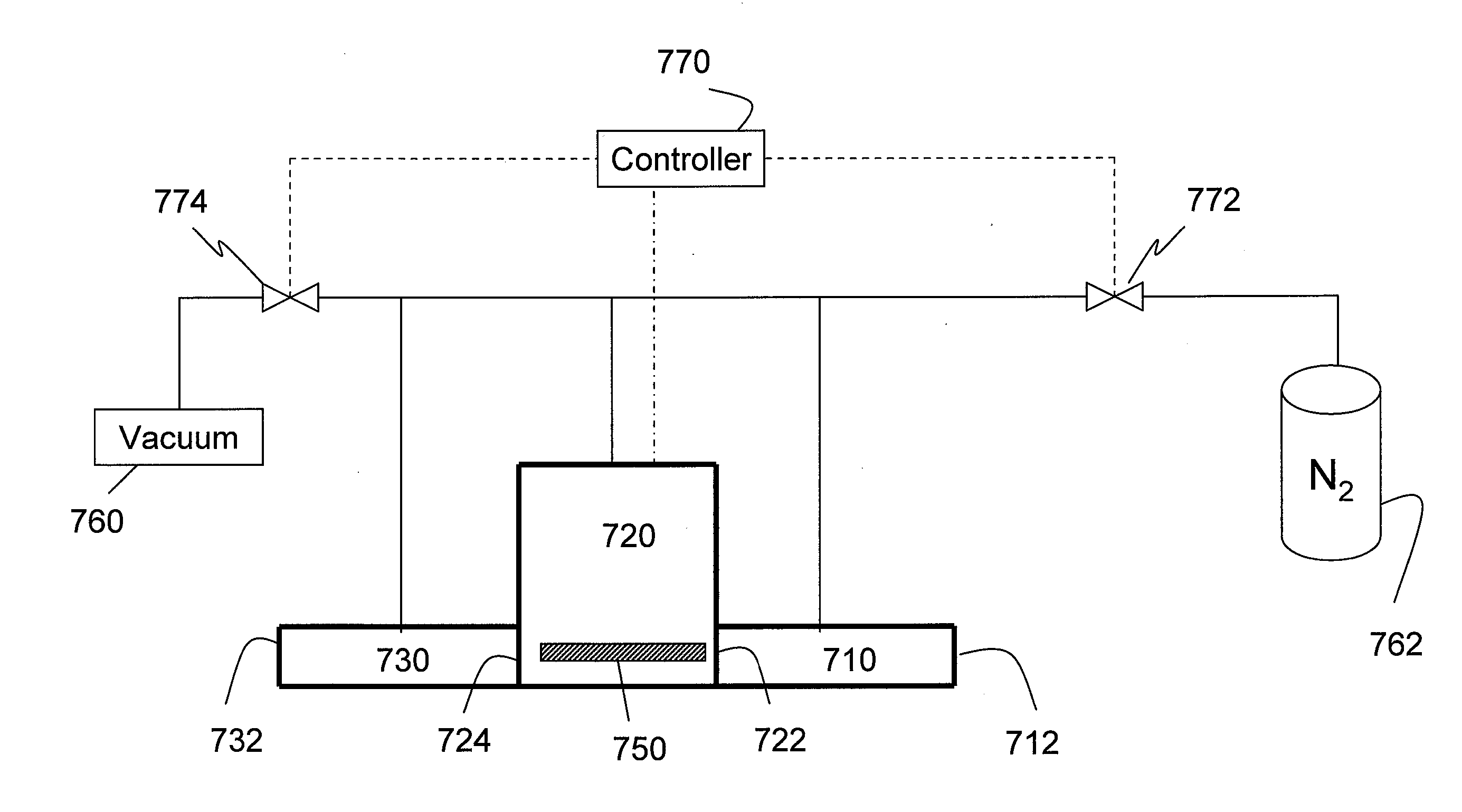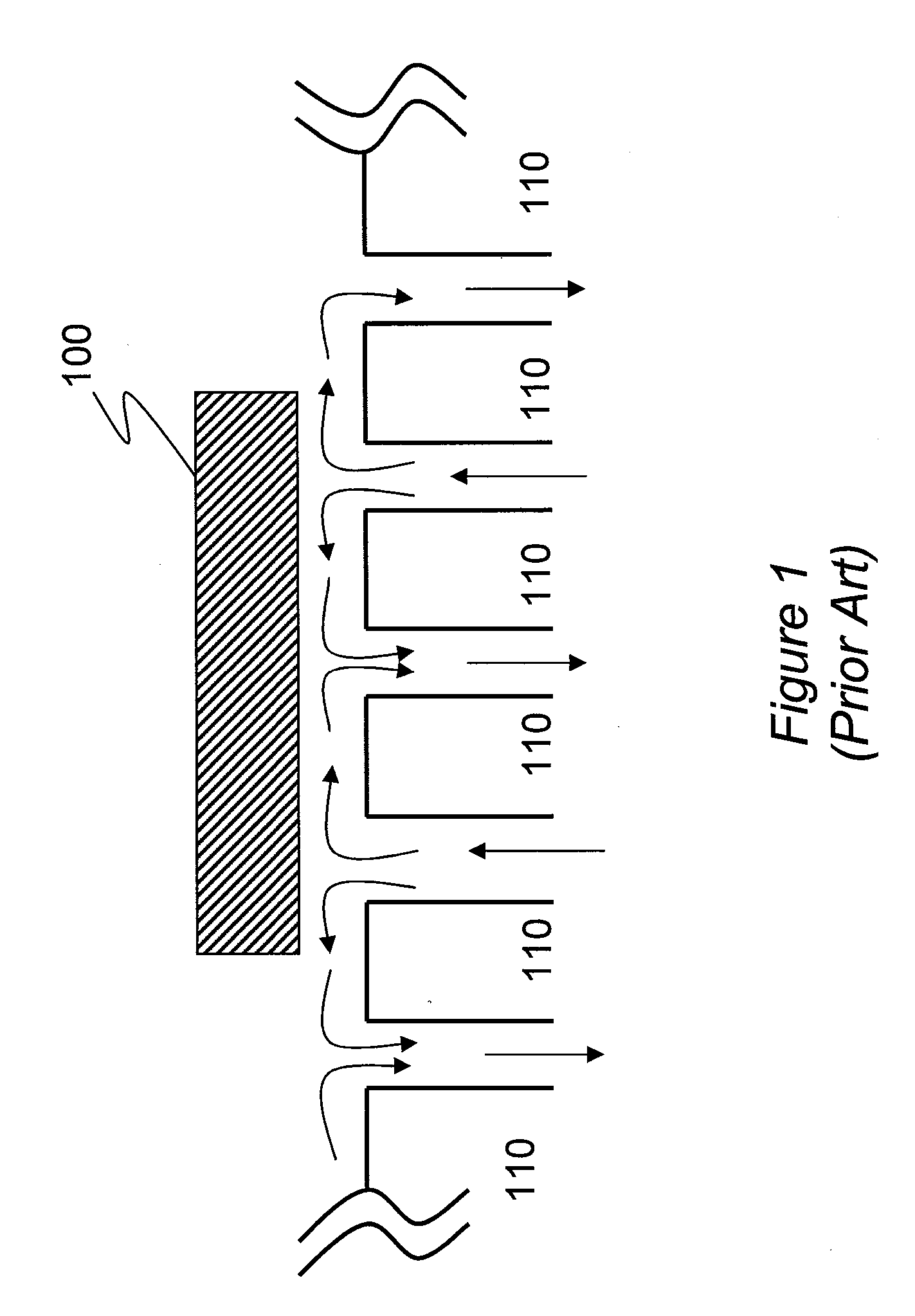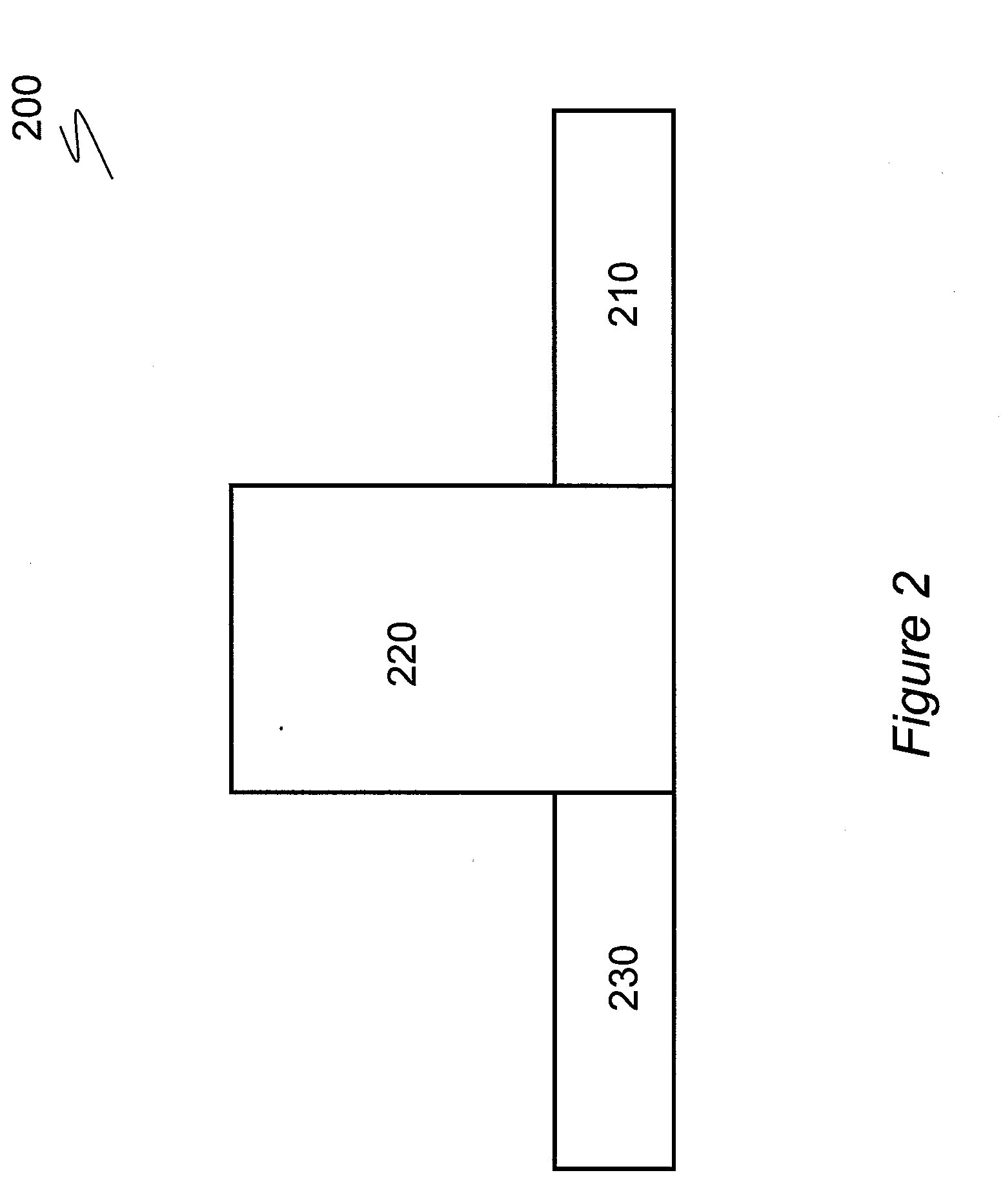Method And Apparatus for Load-Locked Printing
a technology of patterned film and load-locked printing, which is applied in the direction of printing, coating, inking apparatus, etc., can solve the problems of inefficiency of process, difficult use of shadow masks over large areas, and increasing coating of shadow masks, so as to prevent oxidation or contamination
- Summary
- Abstract
- Description
- Claims
- Application Information
AI Technical Summary
Benefits of technology
Problems solved by technology
Method used
Image
Examples
Embodiment Construction
[0027]FIG. 1 is a schematic representation of a conventional substrate floatation system. More specifically, FIG. 1 shows a portion of a flotation system in which substrate 100 is supported by air bearings. The air bearings are shown schematically as arrows entering and leaving between baffles 110. The substrate floatation system of FIG. 1 is typically housed in a sealed chamber (not shown). The chamber includes multiple vacuum outlet ports and gas bearing inlet ports, which are typically arranged on a flat surface. Substrate 100 is lifted and kept off a hard surface by the pressure of a gas such as nitrogen. The flow out of the bearing volume is accomplished by means of multiple vacuum outlet ports. The floating height is typically a function of the gas pressure and flow. In principle, any gas can be utilized for such a substrate floatation system; however, in practice it is preferable to utilize a floatation gas that is inert to the materials that come into contact with the gas. A...
PUM
| Property | Measurement | Unit |
|---|---|---|
| thickness | aaaaa | aaaaa |
| thickness | aaaaa | aaaaa |
| purity | aaaaa | aaaaa |
Abstract
Description
Claims
Application Information
 Login to View More
Login to View More - R&D
- Intellectual Property
- Life Sciences
- Materials
- Tech Scout
- Unparalleled Data Quality
- Higher Quality Content
- 60% Fewer Hallucinations
Browse by: Latest US Patents, China's latest patents, Technical Efficacy Thesaurus, Application Domain, Technology Topic, Popular Technical Reports.
© 2025 PatSnap. All rights reserved.Legal|Privacy policy|Modern Slavery Act Transparency Statement|Sitemap|About US| Contact US: help@patsnap.com



